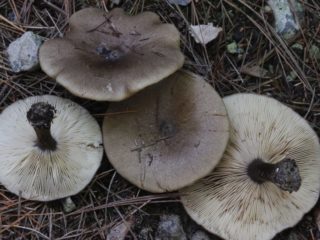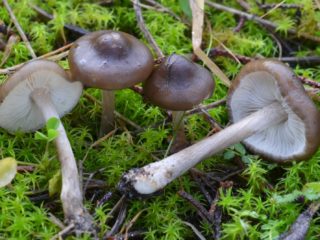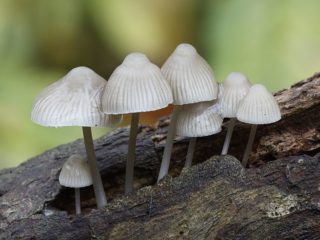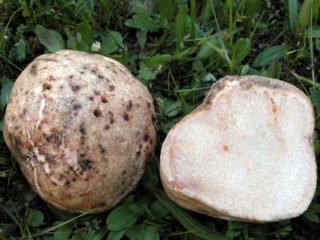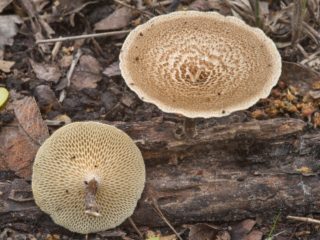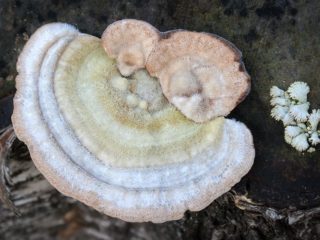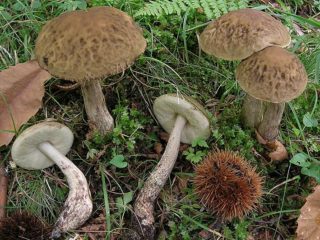Content
Melanoleuca striatum is a member of the Rowadovaceae family. It grows in small groups and singly everywhere on all continents. In scientific reference books it appears as Melanoleuca grammopodia.
What do Melanoleuca striatapods look like?
This species is characterized by the classic structure of the fruiting body, so it has a clearly defined cap and stem.
The diameter of the upper part in adult specimens reaches 15 cm. Initially, the cap is convex, but as it grows it flattens and becomes slightly concave. Over time, a bump appears in the center. The edge of the cap is curved, not folded. The surface is dry and matte even at high air humidity. The shade of the upper part can be gray-white, ocher or light walnut depending on the place of growth.Overripe specimens lose color saturation and become faded.
The pulp of the fruiting body is initially white-gray in color, and later becomes brown. When in contact with air, its shade does not change. The consistency is elastic regardless of the age of the mushroom.
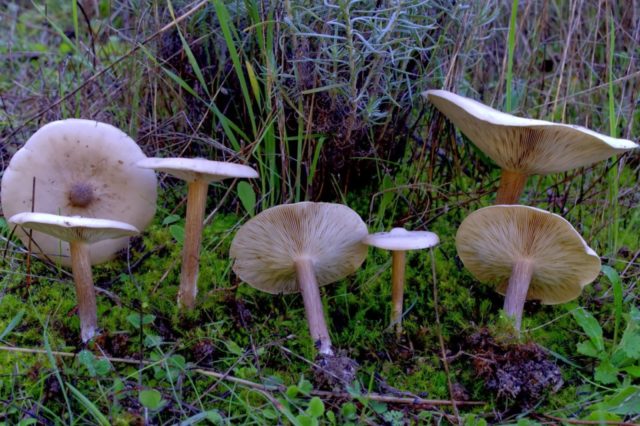
The pulp of Melanoleuca striata has an inexpressive powdery odor and a sweetish taste.
This species has a lamellar hymenophore. Its color is initially gray-white, and when mature, the spores turn brown. The plates are often tortuous, and in some cases they can be jagged and adhere to the stalk.
The lower part is cylindrical and slightly thickened at the base. Its length reaches 10 cm, and its width varies between 1.5-2 cm. On the surface you can see longitudinal dark brown fibers, due to which the pulp is characterized by increased rigidity. The cover is missing. The spore powder is white or light cream. In Melanoleuca striatapod, the spores are thin-walled, 6.5-8.5 × 5-6 microns in size. Their shape is ovoid; large, medium and small warts are present on the surface.
Where do Melanoleuca striatapods grow?
This species can be found in every corner of the world. Melanoleuca striatum prefers to grow in deciduous forests and mixed plantings, and can sometimes be found in coniferous forests. Mostly grows in small groups, occasionally singly.
Melanoleuca striatum can also be found:
- in the gardens;
- in the clearings;
- in a park area;
- in illuminated grassy areas.
Is it possible to eat melanoleucids?
This species is classified as edible. In terms of taste, it belongs to the fourth class.Only the cap can be eaten, since the stem is characterized by increased rigidity due to its fibrous consistency.
False doubles
In terms of external features, melanoleuca striatopod is similar to other species. Therefore, you should familiarize yourself with the main differences between doubles in order to avoid mistakes.
May mushroom. An edible representative of the Lyophyllaceae family. The cap is hemispherical or cushion-shaped with a relatively regular shape. The diameter of the upper part reaches 4-10 cm. The leg is thick and short. Its length is 4-7 cm, and its width is about 3 cm. The color of the surface is cream, and closer to the center of the cap it is yellowish. The pulp is white, dense. Grows in groups. The official name is Calocybe gambosa. It can only be confused with melanoleuca striapodum at the initial stage of growth. The fruiting period begins in May-June.
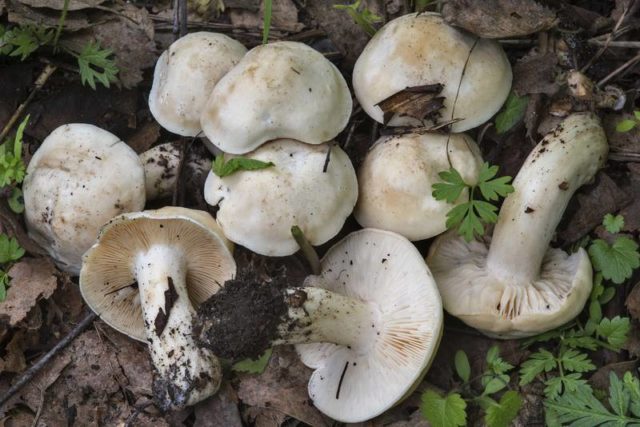
When there is a lot of crowding, the cap of the May mushroom becomes deformed
Melanoleuca erecta. This species is considered edible and belongs to the Rowadovaceae family. This lookalike is a close relative of Melanoleuca striapodosa. The color of the fruiting body is cream, only the shade is darker towards the center of the cap. The diameter of the upper part is 6-10 cm, the height of the leg is 8-12 cm. The official name is Melanoleuca strictipes.
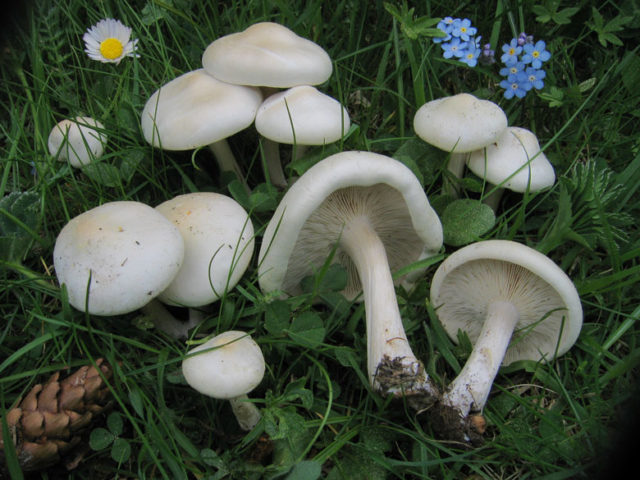
Melanoleuca erecta grows mainly in pastures, meadows, and gardens
Collection rules
In warm weather in spring, melanoleuca striatum can be found in April, but the mass fruiting period begins in May. Cases of collecting single specimens in spruce forests in July-August were also recorded.
When collecting, you must use a sharp knife, cutting off the mushroom at the base. This will prevent damage to the integrity of the mycelium.
Use
Melanoleuca striatum can be eaten without fear, even fresh. During processing, the powdery smell of the pulp disappears.
Also, melanoleuca striatum can be combined with other mushrooms to prepare different dishes.
Conclusion
Melanoleuca striatum is a worthy representative of its family. When prepared correctly, it can compete with other common species. In addition, its fruiting occurs in the spring, which is also an advantage, since the range of mushrooms during this period is not so diverse. But experts recommend using only the caps of young specimens for food, as they have a pleasant taste.
